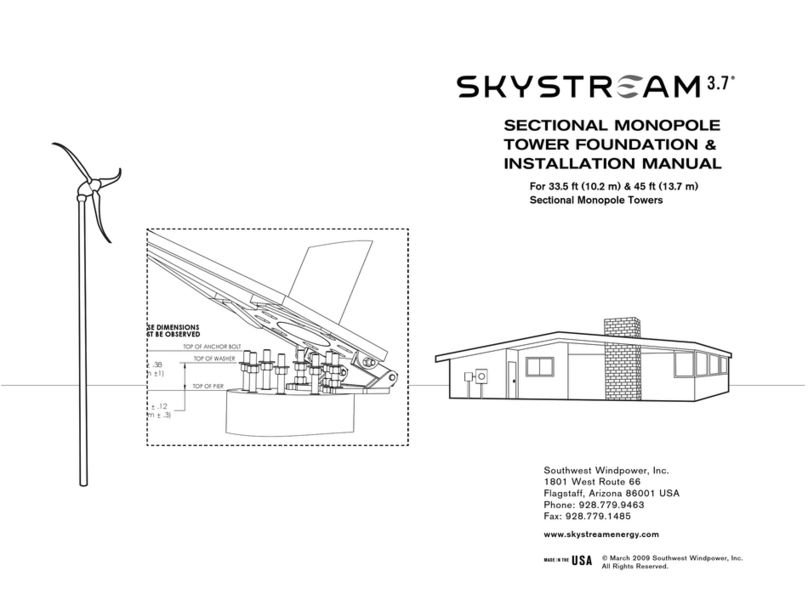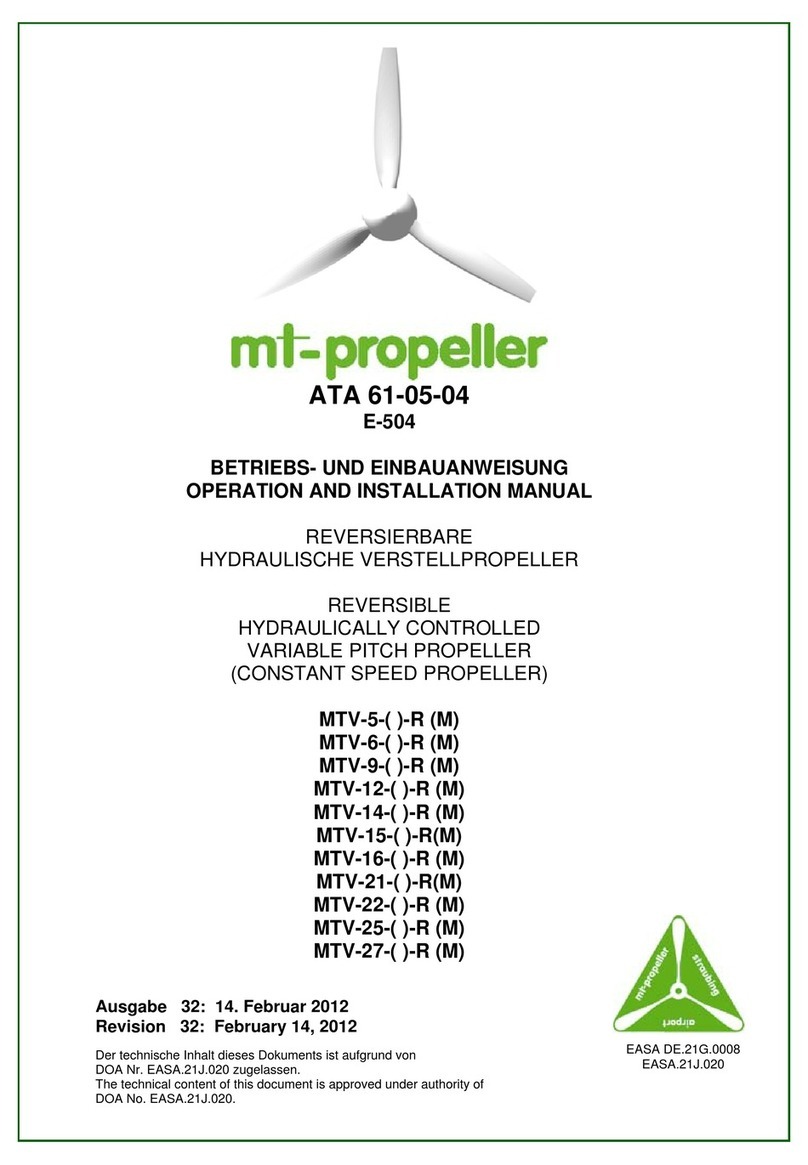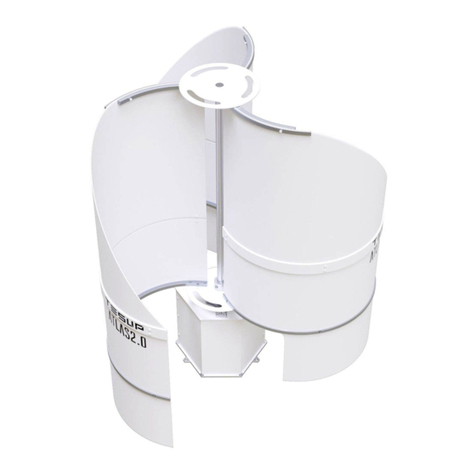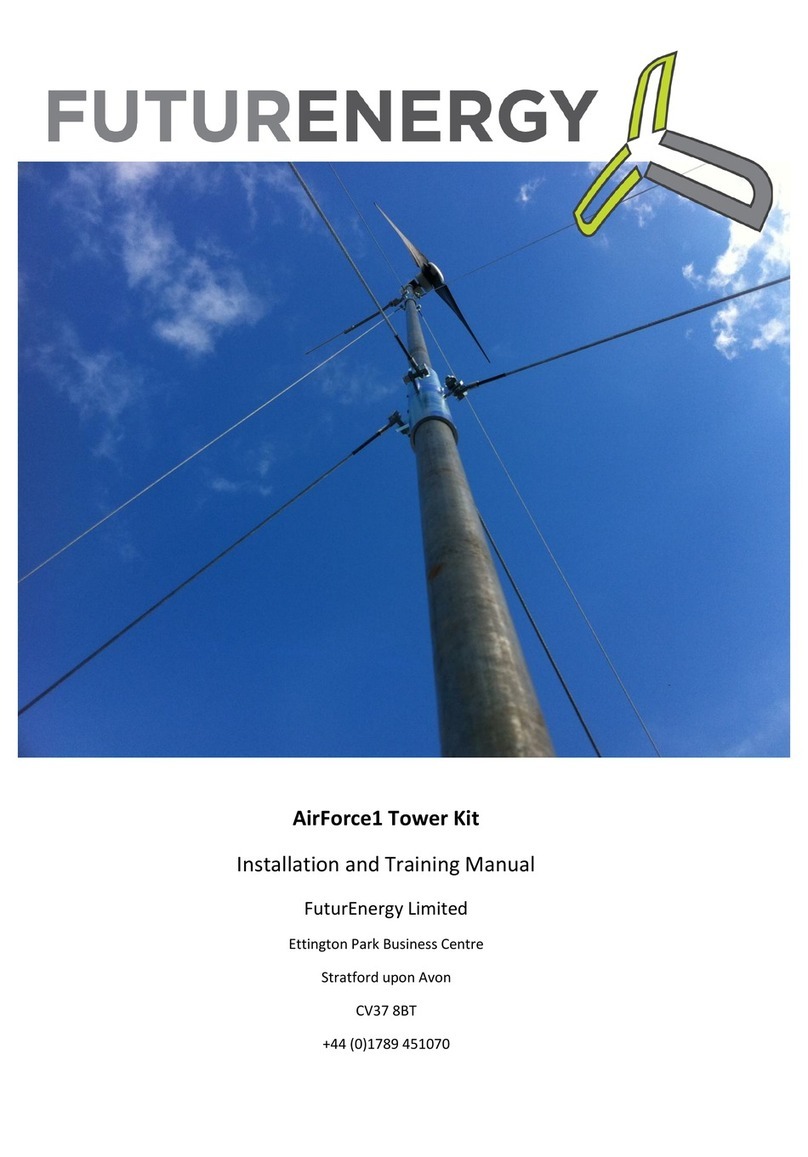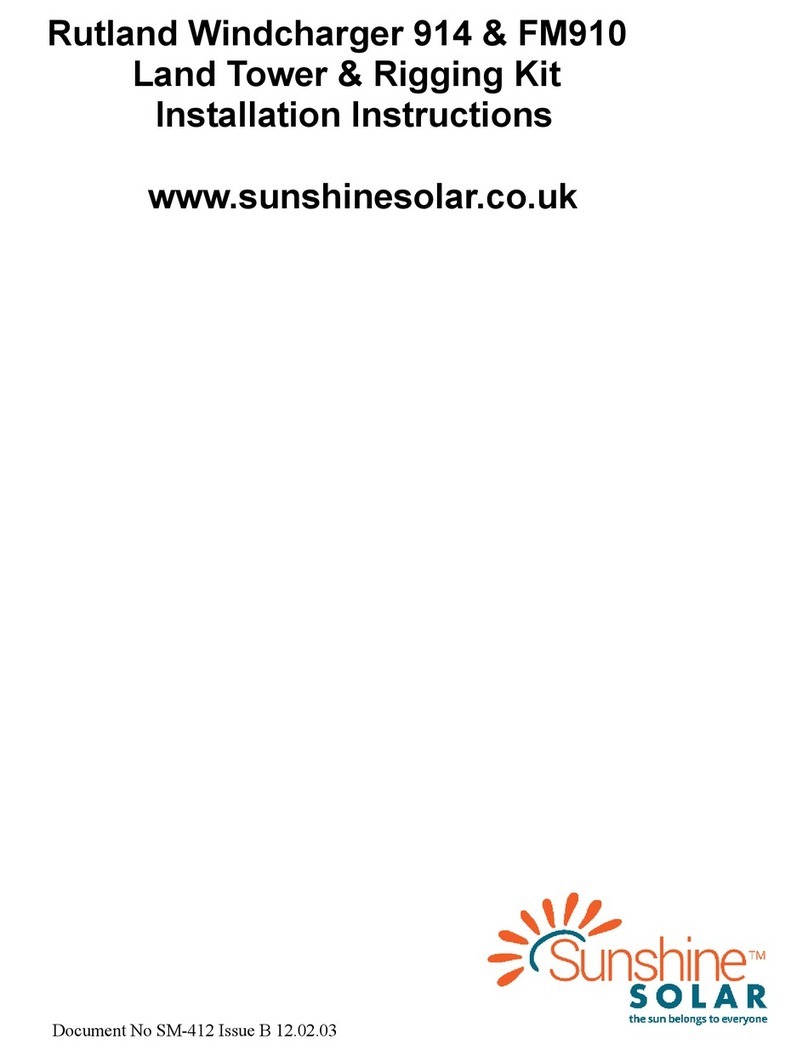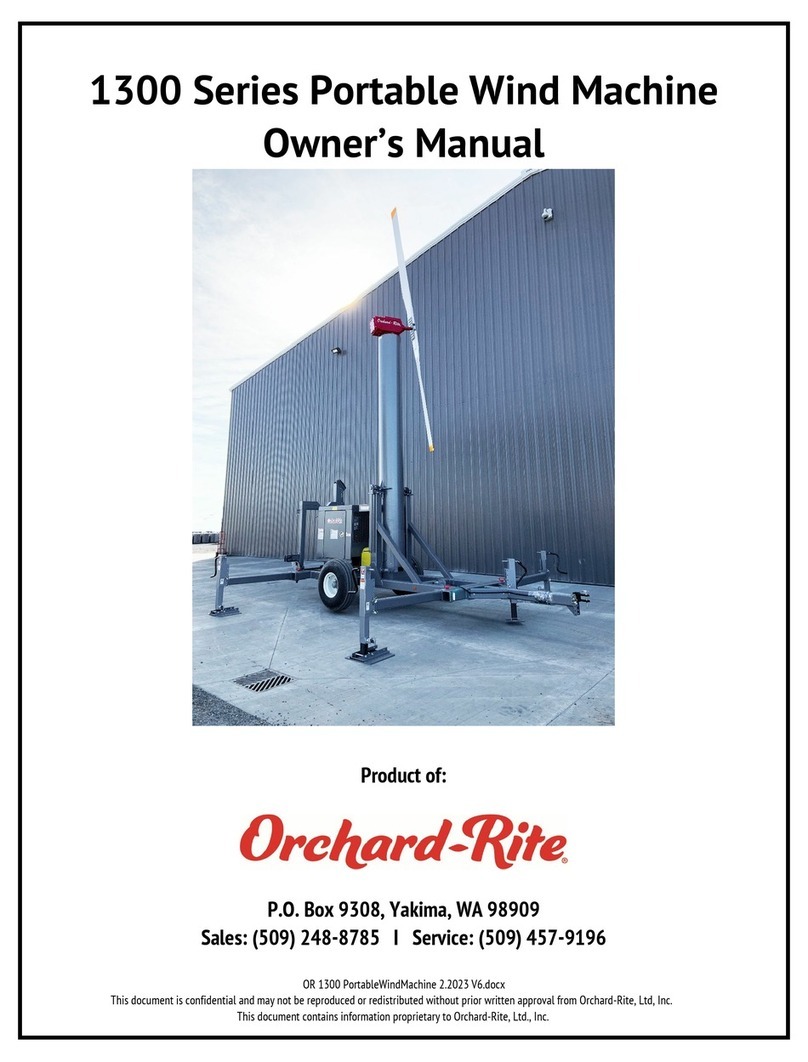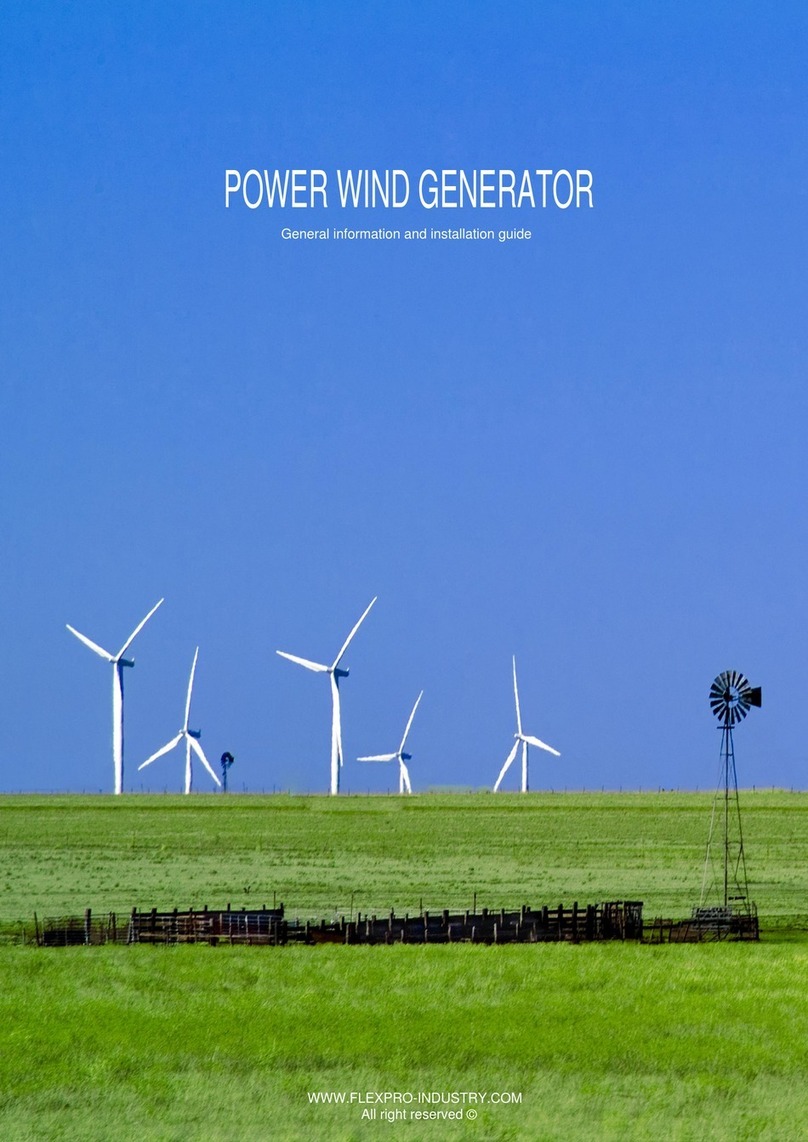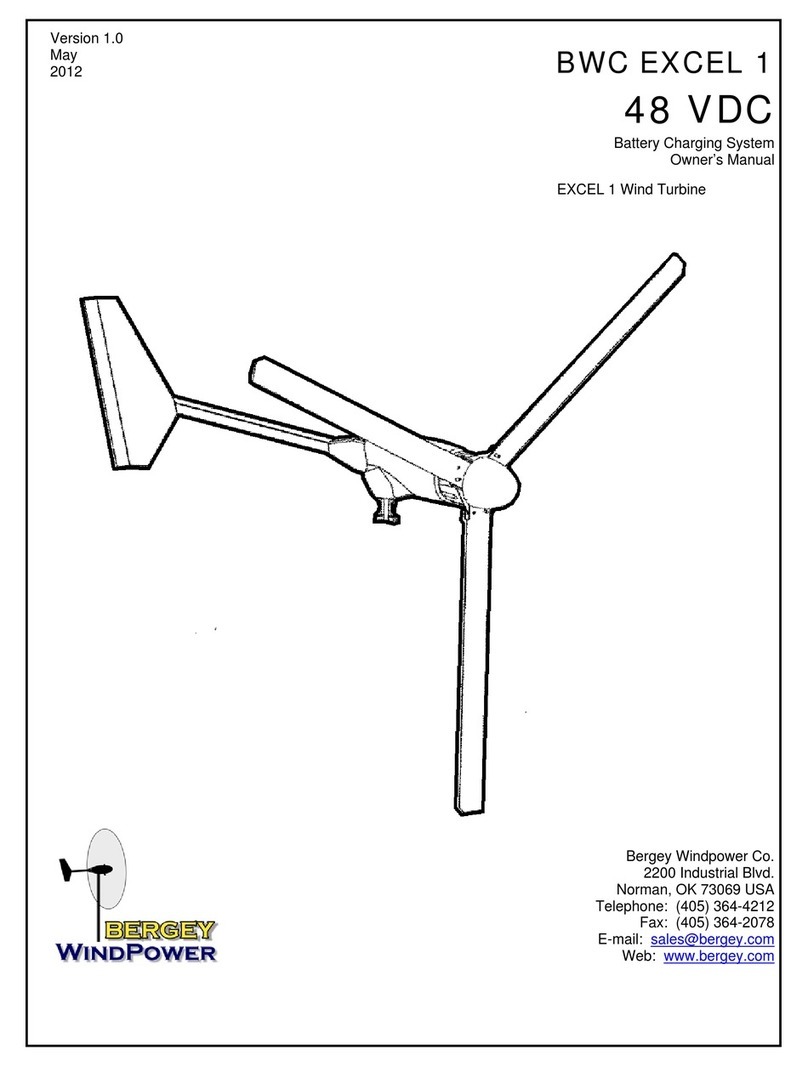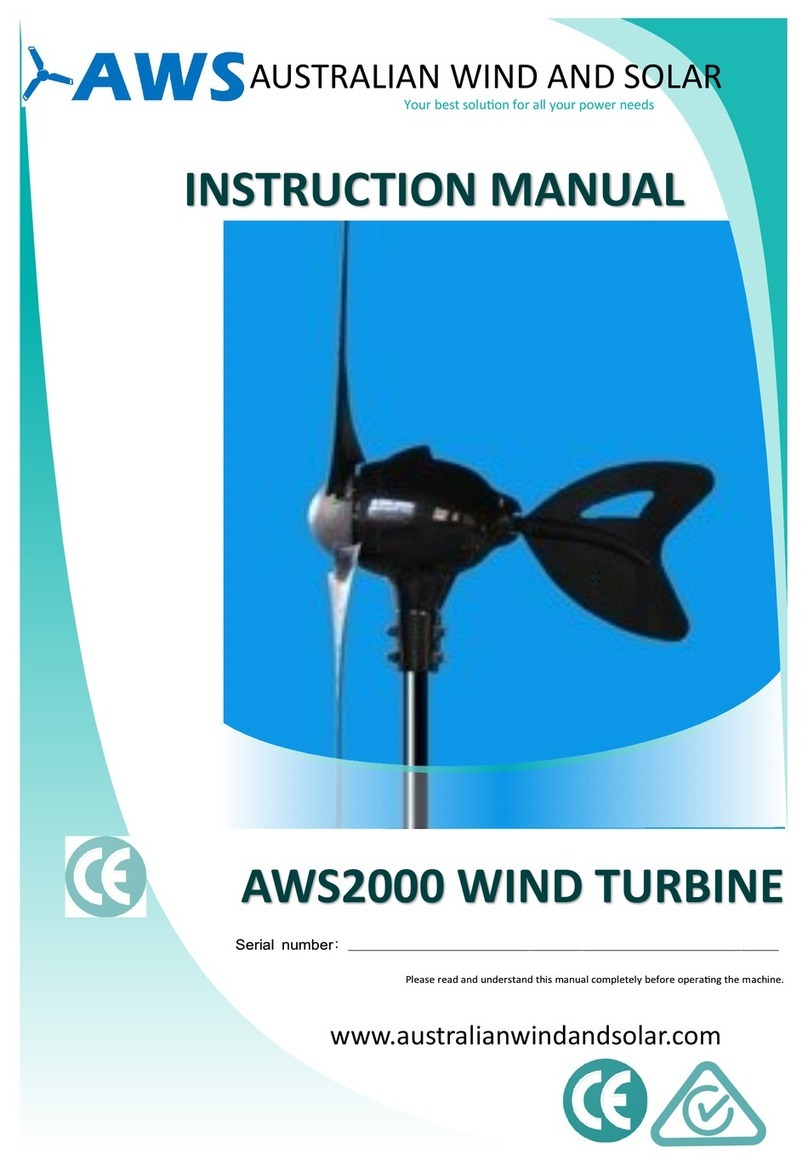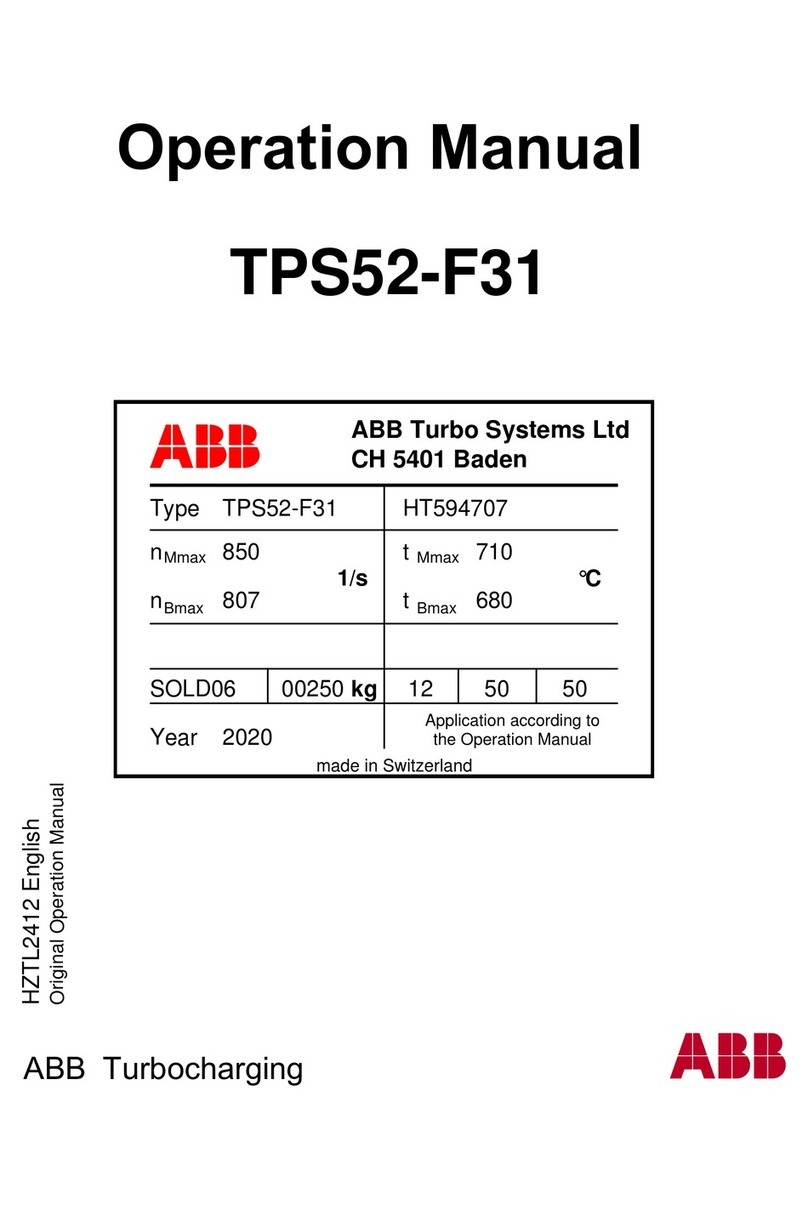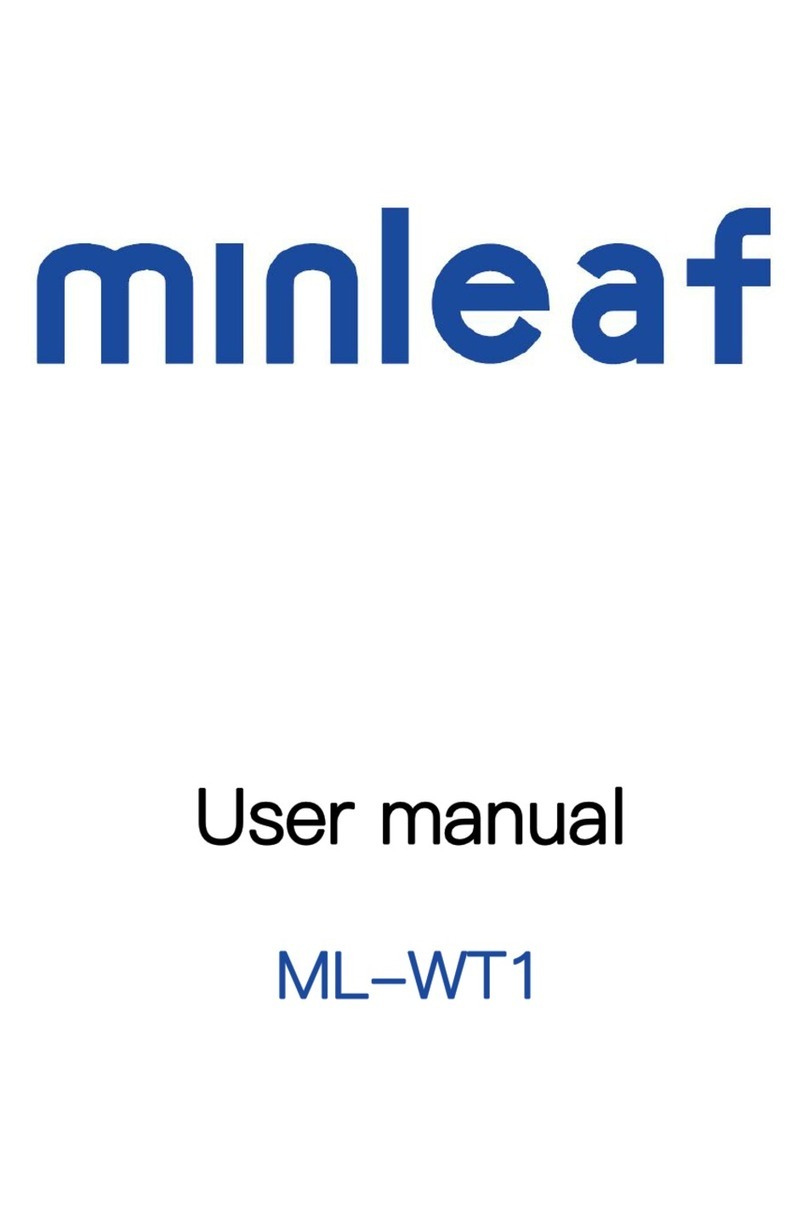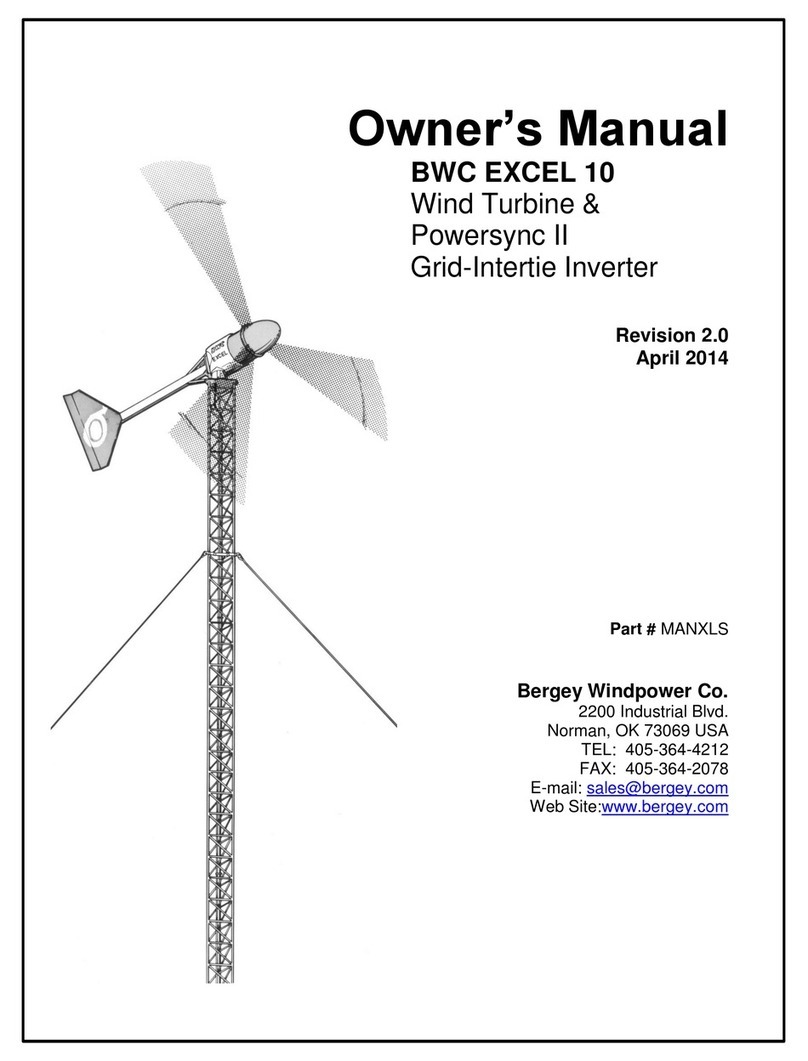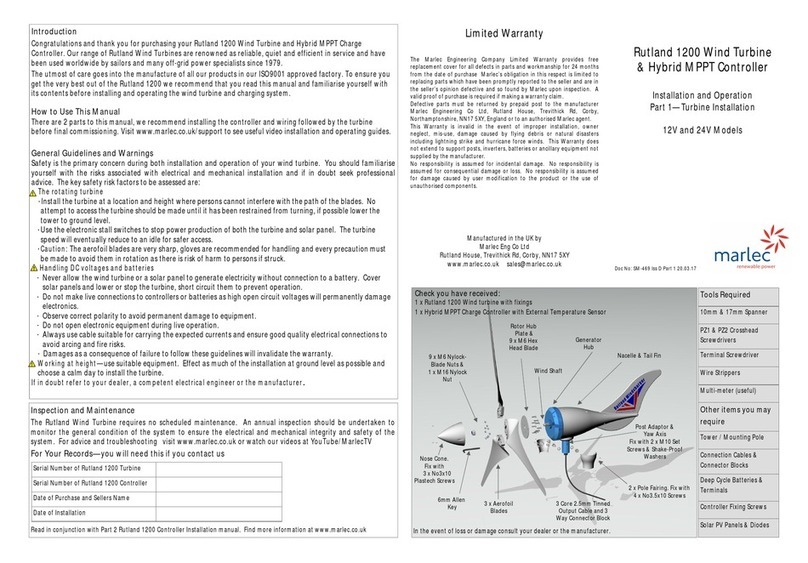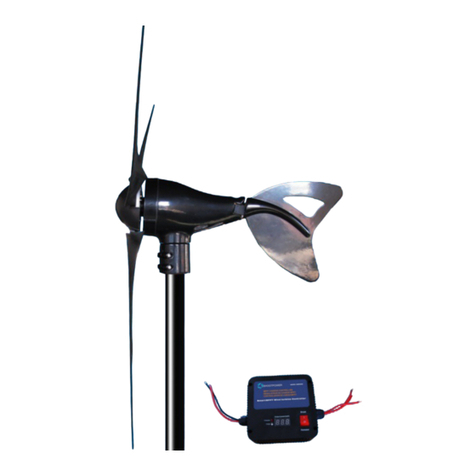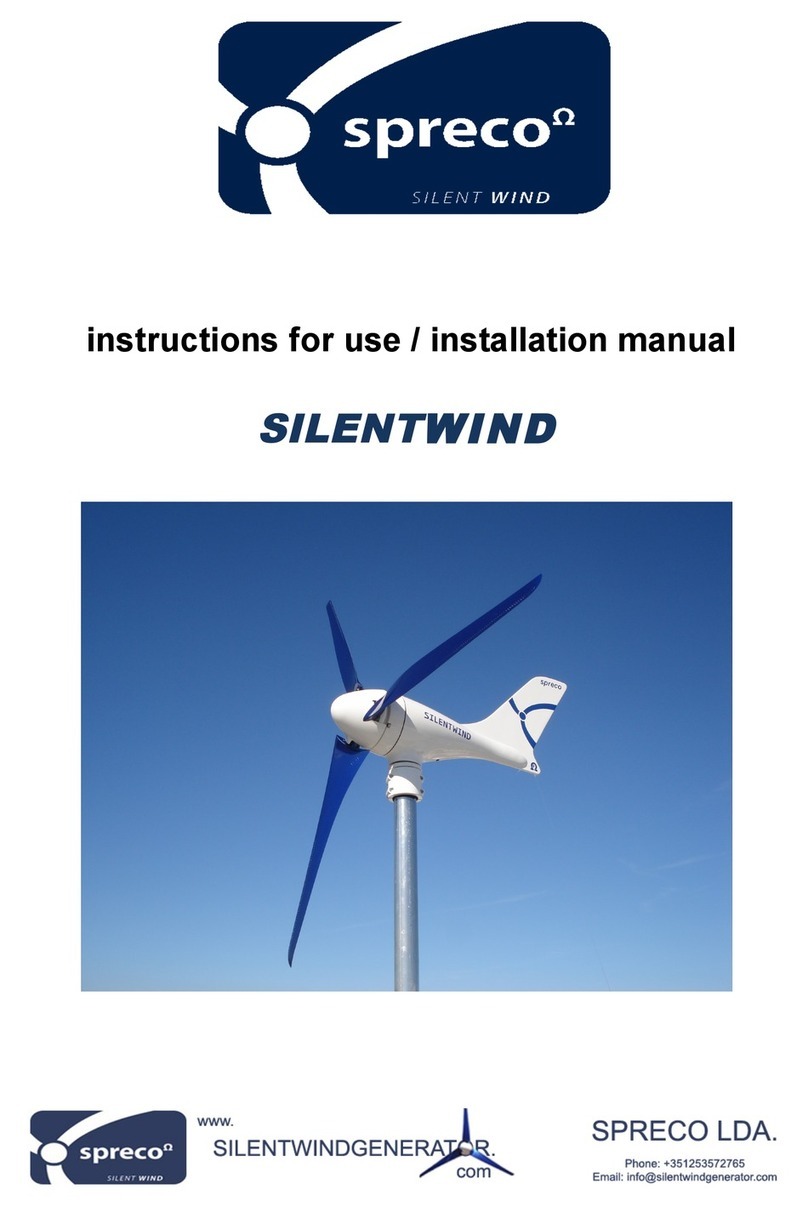
Rutland 914i Windcharger Installation & Operation
Doc No:SM-137 Iss. E 11.03.19 8 Marlec Eng Co Ltd
Assembly and Installation
Twelve Step Quick Start Guide
1. Choose an open site to expose the Windcharger to a clear flow of wind and avoiding
obstructions. On board mount the Windcharger at least 2.4 metres above the deck and on
land at least 4-6m high. Read the full section on Siting.
2. Choose a mounting pole with an internal diameter of 41.0mm and external diameter of
no greater than 48.5 mm for the top 0.6m minimum to (i) prevent accidental damage and
(ii) meet warranty conditions.
3. Mount a charge regulator, from the Marlec range, to a suitable vertical surface and close
to the battery. Follow instructions supplied with the charge regulator.
4. Drill the mounting pole, if required, in preparation to accept and secure the
Windcharger. See Assembly and Installation section.
5. Choose suitable two core cable to connect from the Windcharger to the regulator. Up to
20m this should be of at least 2.5mm² cross sectional area. A short section of 4mm² cross
sectional area is required to link the regulator to the battery. For other distances see the
table in Cable Specifications.
6. Position the mounting pole ( this may be done on the ground before raising the pole ) so
that the selected cable can be threaded along it.
7. Fit the blades, tail and nose to the Windcharger using fasteners provided. It is
essential that 4 screws are fitted per blade.
8. Join the cable threaded through the pole to the Windcharger output cable using the
connector block provided. Wrap with insulating tape. Alternatively use a latching plug and
socket. We recommend looping back the cable and securing with a cable tie to provide
strain relief to the joint.
9. Carefully push the cables down the pole whilst sliding the post adaptor down the pole.
Line up the holes and secure in place with the hex head screws and tab washers
provided. The tab washer long part should be shaped to curve around the pole and the
short tab wrapped flat onto one hex head flat to prevent the hex head from loosening in
service. Do not allow the turbine to spin freely.
10.Locate the charge regulator close to the batteryand carefully follow ALL the regulator
guidelines and installation sequences for connecting the Windcharger through to the
battery.
11.Ensure that the battery connections are permanent as the Windcharger should NEVER
be operated without a connection to the battery.
12.Raise and secure the Windcharger. It can now be allowed to rotate. Follow the
“ Up and Running- Four Points Final Checklist” featured later. Also the
“ General Guidelines and Warnings” section expands on the above points.
